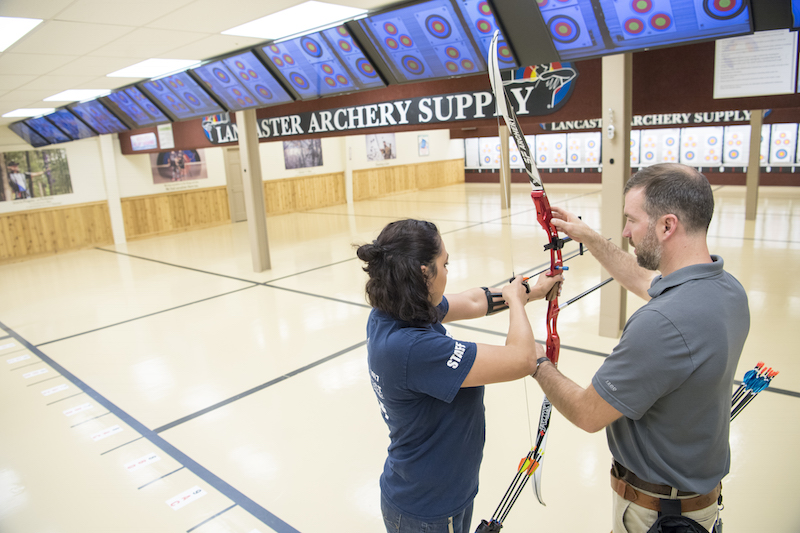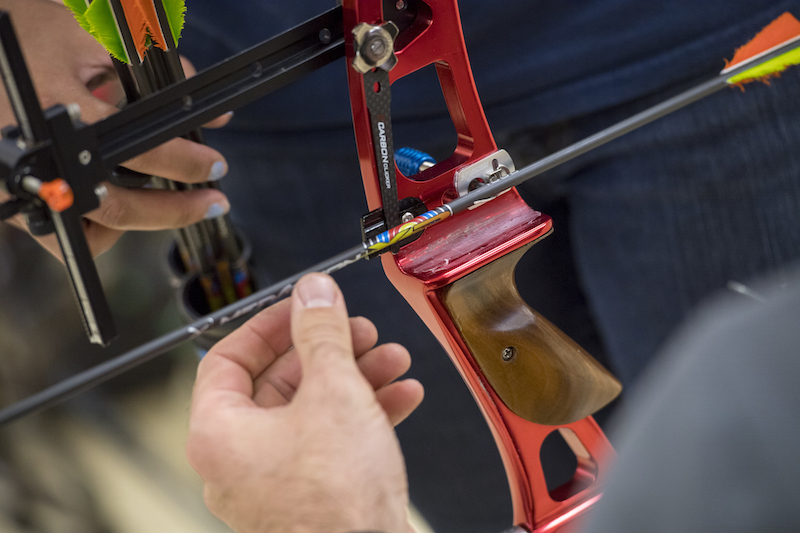Buying a full recurve setup can be daunting. Which brand do you choose? How do you know what will work best? The considerations and combinations seem endless when deciding what to get.
With new equipment debuting annually, archers seldom face a shortage of used equipment. That means you can almost always find cheaper alternatives to new, more expensive, equipment.
One piece of advice: Invest in a good riser that can last years. Riser technology changes slowly, and starting with one you really like can make you shoot more consistently because much of the feel in each shot comes from the riser. A consistent shot feeling leads to more consistent shot execution, which eventually creates consistency.

The next consideration is bow limbs. Beginners should not buy the most expensive limbs; just because they’re the market’s best doesn’t mean you’ll shoot better with them. Besides, beginners usually change poundage within a year of buying their first bow, which could require changing limbs. Your best bet for saving money is to buy low- or medium-level limbs until settling into a poundage you’ll shoot a long time. Don’t look at higher-end limbs until you decide to stay at a certain poundage for at least two years.
Limb material also affects how your bow feels. When you look at high-end limbs, try the different materials—usually foam core vs. wood/bamboo—so you know which limbs you prefer. Friends and other archers at your club are great resources for trying different equipment.
Buying arrows requires the same mindset and patient approach. Don’t spend loads of money on premium outdoor long-range arrows if you’ve never shot farther than 18 meters. They won’t make you shoot better. Buy arrows that suit your needs as you grow. Once you settle on your final poundage, think about investing in higher-quality arrows.

A great sight and plunger should also last a long time, provided you follow two rules: buy from reputable manufacturers, and take good care of them. Several manufacturers make outstanding sights and plungers. Sights with carbon extensions aren’t required, but they save weight on the riser and absorb shock during the shot. A plunger with repeatable settings—which are usually marked with numbers on the barrels and include an internal clicking mechanism—is your best choice. After buying a sight and plunger, learn how to disassemble and clean them so you can keep them in good working order for years.
Stabilizers are personal, so don’t take a “one-size-fits-all” approach. Try several sets of stabilizers to see which one feels the best when you shoot. Seek a stabilizer that calms your aiming pattern—that is, the movement of your sight pin while at full draw—and absorbs shock really well when you shoot.
When buying recurve equipment, remember this: The best equipment won’t make you a better archer. Keeping your equipment consistent makes you more consistent. Changing equipment usually involves a learning curve. Keep refining your shot, and you’ll soon learn that execution is more important than equipment.



